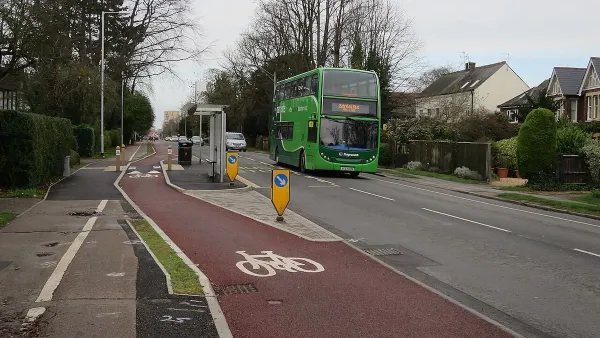“Getting” Universal Design creates an “Aha!” moment. Experiencing Universal Design creates a “Wow!” moment.
"Getting" Universal Design creates an "Aha!" moment. Experiencing Universal Design creates a "Wow!" moment.
Universal Design is the misunderstood love child of the accessibility movement pioneers and the Americans with Disabilities Act (ADA). The early advocates learned that good design for people with a wide range of disabilities translates into good design for everyone. The ADA created a base line of requirements that addresses a narrow range of mobility disabilities. Born of enlightened advocacy for the diversity of human experience and well-meaning, consciousness-raising legislation, Universal Design suffers from an image problem that equates it with "uber-accessibility."
Universal Design isn't "uber" anything. It is a call – a cry, really – to put people, who experience life in myriad ways, at the center of design. That's IT. Period.
It seems to be gaining currency. In design, the industrial and product designers have "gotten" it for years. The architects, planners and landscape architects are just catching on. I fear that the well-meaning, earnest ADA may have had some hand in this, but the love child is ready to lead them on their way to beauty and happiness.
A very simple idea. Peter Merholz, a designer who works with Adaptive Path has written a wonderful article that can be found at http://www.core77.com/reactor/06.07_merholz.asp. The essence of his message is that the most successful designs – those that have enjoyed the "Wow!" moments - come from designers (Eastman with Kodak, Jobs with Apple) who design for the human experience. Out of that philosophy came products, but the purpose is to enhance the human experience. Wow.
The alternative, designing to parameters and features, he argues, results in convoluted solutions. Do you use all that functionality in your cell phone? How about that printer/fax/scanner/copier? Is it intuitive, functional and beautiful? Why not? According to Merholz, designers stop too soon. They stop when the basic problem is solved; but the elegance comes with time and when the designer thinks about the experience that people will have. In the words of artist Timothy Berry, "I would have made simpler drawings, but I didn't have the time."
John Maeda, designer, artist, computer scientist, MIT professor, and founder of the Simplicity Consortium at the MIT Media Lab, agrees. Although his titles defy his own cause, his most recent book, The Laws of Simplicity, is a delicate and delightful musing and measure of simplicity. He embarked on a journey to unravel the laws/complexity of simplicity as an antidote to the sense that we are all feeling overwhelmed – most often as a result of technology. Citing Apple and Google as powerful examples, he observes "People not only buy, but more importantly love, designs that make their life simpler." Bingo! We come full circle.
From zoning laws to apple peelers, people are the users, people are the beneficiaries, people thrive or wither with the experience of everyday design, and of design every day.

Analysis: Cybertruck Fatality Rate Far Exceeds That of Ford Pinto
The Tesla Cybertruck was recalled seven times last year.

National Parks Layoffs Will Cause Communities to Lose Billions
Thousands of essential park workers were laid off this week, just before the busy spring break season.

Retro-silient?: America’s First “Eco-burb,” The Woodlands Turns 50
A master-planned community north of Houston offers lessons on green infrastructure and resilient design, but falls short of its founder’s lofty affordability and walkability goals.

Test News Post 1
This is a summary

Analysis: Cybertruck Fatality Rate Far Exceeds That of Ford Pinto
The Tesla Cybertruck was recalled seven times last year.

Test News Headline 46
Test for the image on the front page.
Urban Design for Planners 1: Software Tools
This six-course series explores essential urban design concepts using open source software and equips planners with the tools they need to participate fully in the urban design process.
Planning for Universal Design
Learn the tools for implementing Universal Design in planning regulations.
EMC Planning Group, Inc.
Planetizen
Planetizen
Mpact (formerly Rail~Volution)
Great Falls Development Authority, Inc.
HUDs Office of Policy Development and Research
NYU Wagner Graduate School of Public Service





























